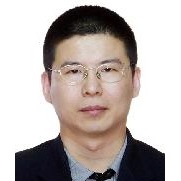Energy Harvesting Technologies for IoT Systems
A special issue of Sensors (ISSN 1424-8220). This special issue belongs to the section "Internet of Things".
Deadline for manuscript submissions: closed (20 October 2023) | Viewed by 885
Special Issue Editors
Interests: mobile computing; smart grid; Internet of Things
Interests: IoTs; edge computing; mobile computing
Interests: wireless communication; network security; mobile edge computing
Special Issue Information
Dear Colleagues,
In recent years, we have witnessed the advent and rise of the Internet of Things (IoT) due to its advantages of connecting machines and systems together via sensors and collecting real-time information. Based on information provided by the IoT system, businesses can further optimize their workflows and lower their operating costs. Various IoT systems have flourished in many application domains, such as smart homes, smart buildings, Industry 4.0, smart cities, smart grids, etc. With the popularization of IoT systems, the energy supply for IoT devices becomes an increasingly prominent challenge. Compared with traditional battery power supply, energy harvesting technology can gather energy (sunlight, wind, radiofrequency, vibration, geothermal, tidal, etc.) from the ambient surroundings to obtain electric power and maintain the operation of IoT systems. In such a way, energy-harvesting-based IoT systems can be self-powered and avoid high costs for battery replacement. However, different energy harvesting technologies work based on different principles and have different application requirements and energy-conversion efficiencies. To further explore the characteristics of energy harvesting technologies for IoT systems, this Special Issue seeks to showcase research papers and review articles focused on emerging energy harvesting technologies, IoT systems with energy harvesting technologies, new energy harvesting and management algorithms, and emerging IoT applications.
The topics include but are not limited to:
- Energy harvesting systems for IoTs.
- Energy harvesting technologies for IoTs, i.e., radiofrequency (RF)/solar/wind/vibration/geothermal/tidal energy.
- New emerging energy harvesting technologies and their applications.
- Resource management/scheduling for energy harvesting system.
- Emerging IoT applications with energy harvesting technologies.
Dr. Yongmin Zhang
Dr. Guangsheng Feng
Dr. Xiaolong Lan
Dr. Yuanzhi Ni
Guest Editors
Manuscript Submission Information
Manuscripts should be submitted online at www.mdpi.com by registering and logging in to this website. Once you are registered, click here to go to the submission form. Manuscripts can be submitted until the deadline. All submissions that pass pre-check are peer-reviewed. Accepted papers will be published continuously in the journal (as soon as accepted) and will be listed together on the special issue website. Research articles, review articles as well as short communications are invited. For planned papers, a title and short abstract (about 100 words) can be sent to the Editorial Office for announcement on this website.
Submitted manuscripts should not have been published previously, nor be under consideration for publication elsewhere (except conference proceedings papers). All manuscripts are thoroughly refereed through a single-blind peer-review process. A guide for authors and other relevant information for submission of manuscripts is available on the Instructions for Authors page. Sensors is an international peer-reviewed open access semimonthly journal published by MDPI.
Please visit the Instructions for Authors page before submitting a manuscript. The Article Processing Charge (APC) for publication in this open access journal is 2600 CHF (Swiss Francs). Submitted papers should be well formatted and use good English. Authors may use MDPI's English editing service prior to publication or during author revisions.









